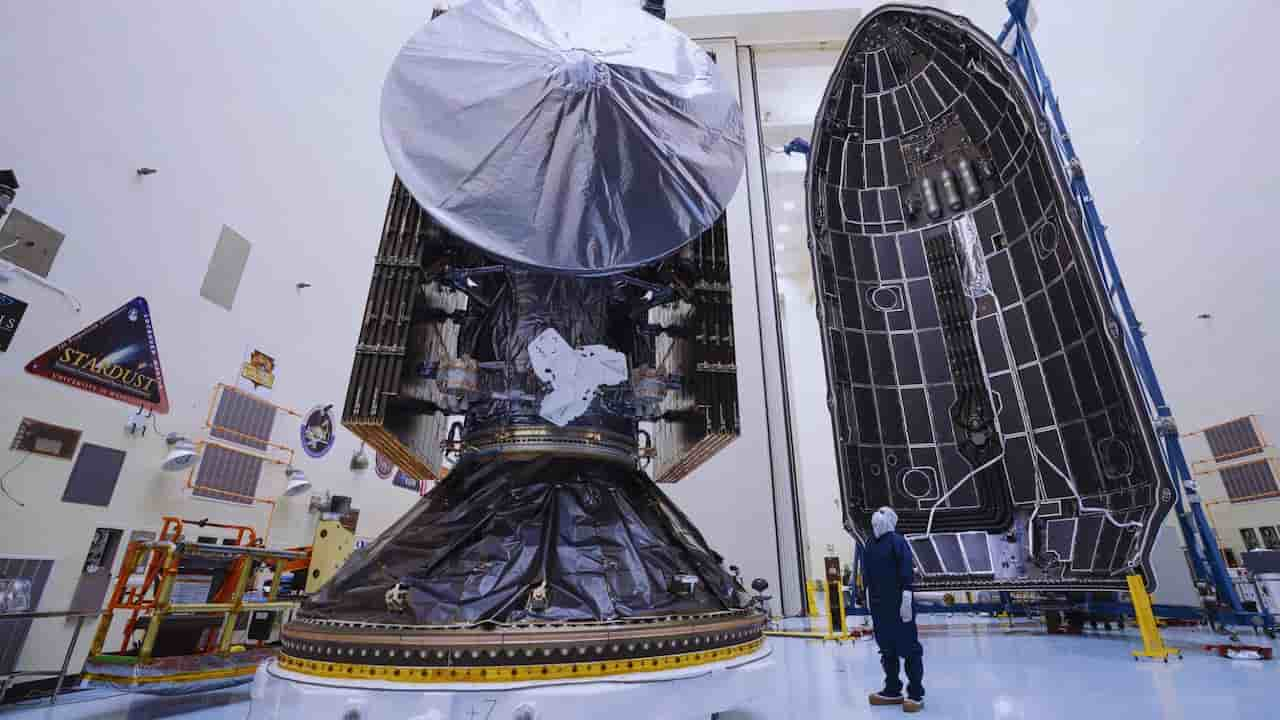NASA’s Europa Clipper: Unveiling Jupiter’s Icy Moon Mystery
In a groundbreaking mission that could redefine our understanding of life in the universe, NASA has successfully launched the Europa Clipper spacecraft. This ambitious project aims to explore one of Jupiter’s most intriguing moons, Europa, which scientists believe could harbor the conditions necessary for life.
On October 15, 2024, at 12:06 pm EDT, the Europa Clipper lifted off from Kennedy Space Center in Florida. The spacecraft rode atop a SpaceX Falcon Heavy rocket, the world’s most powerful operational launch vehicle.
As the engines roared to life, the rocket pushed through Earth’s atmosphere, carrying the hopes and dreams of scientists and space enthusiasts alike.
The journey ahead is long and complex. Europa Clipper will travel 1.8 billion miles over five and a half years before reaching its destination. Along the way, it will use the gravity of Mars and Earth to slingshot itself toward Jupiter, saving fuel and increasing speed.
Why Europa?
Europa has captured scientists since the Voyager probes first sent back close-up images in 1979. This icy moon, about the size of Earth’s moon, hides a secret beneath its frozen surface—a global ocean of liquid water. This discovery has made Europa one of the most promising places in our solar system to search for life beyond Earth.
“We’re not just exploring a frozen world,” says Dr. Curt Niebur, Europa Clipper’s program scientist. “We’re investigating a place that might be alive right now.”
The Mission
Once in orbit around Jupiter in April 2030, Europa Clipper will perform 49 close flybys of Europa. These passes will bring the spacecraft as close as 16 miles above the moon’s surface, allowing its instruments to gather detailed data about Europa’s composition, structure, and potential for hosting life.
The spacecraft is equipped with nine advanced instruments, which are as follows:
- Cameras are used to capture high-resolution images of the surface.
- We are using ice-penetrating radar to study the structure of Europa’s icy shell.
- We use a magnetometer to gauge the intensity and orientation of the moon’s magnetic field.
- Spectrometers are used to analyze the chemical makeup of Europa’s surface and any material ejected into space.
These tools will help scientists answer key questions about Europa:
- How thick is the ice shell?
- How deep and salty is the ocean?
- Are there pockets of liquid water within the ice?
- Does the ocean floor have hydrothermal vents like Earth’s oceans?
Life’s Building Blocks
While Europa Clipper won’t directly search for life, it will look for the ingredients necessary to support it. These include liquid water, energy sources, and organic compounds.
“We’re particularly excited about the possibility of finding organic molecules,” explains Dr. Bonnie Buratti, deputy project scientist. “These could be the building blocks of life or even byproducts of living organisms.”
The spacecraft might even fly through plumes of water vapor erupting from cracks in Europa’s icy surface, allowing it to sample material from the hidden ocean without needing to land or drill through the ice.
A New Frontier
The Europa Clipper mission represents a significant step in our quest to understand our cosmic neighborhood and our place within it. By studying Europa, we may gain insights into the potential for life on other icy worlds in our solar system and beyond.
As we await the first data from Europa Clipper, the scientific community and the public alike are filled with anticipation. This mission could change our understanding of life in the universe and our place within it.
The journey to Europa is just beginning, but the destination promises to be nothing short of extraordinary. As we peer into the depths of this distant ocean world, we may find answers to some of humanity’s most profound questions: Are we alone? How common is life in the universe? And what forms might it take in environments vastly different from our own?
Only time—and the Europa Clipper—will tell.
Table of Contents
